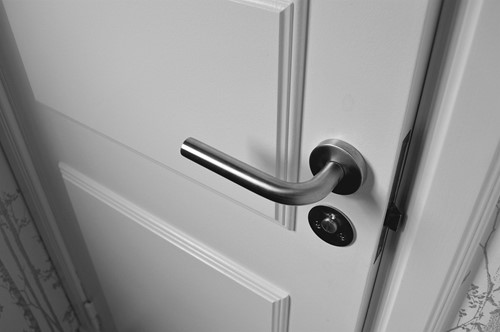
Image by Jonathan Petersson from Pixabay
Home improvement to accommodate residents of all ages and physical abilities not only add convenience and safety to the home, but also make good economic sense. "Aging in place" guidelines have been formulated to assure that housing of the future is designed to meet changing needs. Open floor plans are not only trending, but offer better options for tailoring homes to individual needs.
Sustainability, energy efficiency and accessibility issues have become part of mainstream consciousness. The passage of the Americans with Disabilities Act brought sweeping changes in the realm of accessibility to public facilities and commercial buildings. It is now recognized that similar guidelines can, and should, be applied to residential development. Primary concerns focus on mobility issues, vision or hearing impairments, physical limitations and limited abilities.
Designers and builders acknowledge that homes can better serve the needs of all residents with relatively minor alterations. The current trend toward multi-generational households has driven the point home. Although toddlers and senior citizen have different requirement, minimal changes in home design will make life better for all.
Here are some basics to consider:
Minimize steps and level changes. While thresholds are necessary at exterior doors, it's important that at least one entry door is accessible to someone with difficulty walking or climbing stairs, for anyone using a walker or wheelchair, or for a resident with a vision problem. If there are interior stairs, consider an electric stair lift.
Be aware of traffic patterns. Provide ample space to move about, even with a walker or wheelchair, particularly in kitchens and bathrooms. Eliminate interior halls if possible. Hallways and stairwells should ideally be at least 42 inches wide; 36-inch wide door openings are recommended. Fewer doorways mean fewer barriers in the home. Be aware of the hazards created by flooring changes.
Motion-controlled and voice-activated lighting is recommended both for home exteriors and for interior spaces. Pay special attention to safety lighting on stairs, in bathrooms, and in bedrooms. Also, note that placing electrical receptacles higher on the wall and lowering light switches is of benefit for young children and older adults alike.
Rely on technology to create a safe home. Install security devices, smoke detectors and CO2 monitors, room-to-room communication, programmable thermostats, remote controls for blinds and window coverings, and temperature controls on faucets. Automate home systems as much as possible.
Sometimes, it's the little things that matter. Blade handles on faucets, door levers rather than round knobs, appropriate cabinets knobs and handles, comfort-height bathroom fixtures, multi-height kitchen counters, and numerous other modern home features can make for better living for all.
When building new, including universal design features typically adds great value but little or no cost to a project. Remodeling with an eye toward aging-in-place is also cost-effective and offers high ROI.

Hello! I'm Barb Jones, Realtor
There are many choices when choosing a Realtor to work with when Selling or Buying a home. Generally, it is one of the greatest investments of your lifetime, so it's an important decision. I provide my clients with one-on-one top notch personalized service to bring them success in their Real Estate transaction(s). My strong skillset includes Negotiations, Attention to Detail, Great Communication, Marketing and guiding you every step of the way. I am also skilled at keeping your stress to a minimum and I have a large list of resources to recommend when needed. I invite you to schedule a consultation with me to discuss your situation and we can discuss a plan to meet your needs. (No obligation.)
Top producing Realtor . . .
Century 21 Masters Award Recipient, Century 21 Quality Service Award winner year after year (based on Client Surveys)
C21 C & O President's club